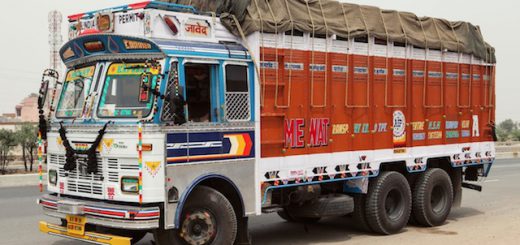How Truckers Can Protect Themselves From Attacks On The Road?
The life of a long-haul trucker involves traversing remote highways and rest stops late at night or in the early hours when they are most vulnerable. Reports of truckers being targeted for cargo theft or violent attacks have increased over the years. Though uncommon, the possibility cannot be ignored. By following certain protocols and protective strategies, drivers can equip themselves to avoid and handle threatening scenarios if they were to arise.
Choosing Safe Parking Spots
At truck stops, avoid isolated, dimly-lit parking lots that offer easy cover for assailants. Seek well-lit areas nearer the truck stop entrance or office and adjacent to other occupied trucks for natural surveillance. Position your truck to prevent anyone from hiding alongside. Backing into spots provides quick, forward access exiting later.
Staying Vigilant Of Surroundings
Maintain situational awareness when exiting your truck by scanning the vicinity and looking for loiterers. Trust your instincts – if anything seems off like a vehicle idling nearby for no reason or a suspicious group hanging around the truck lot, relocate immediately or report it. Avoid routinely parking in the same spots each trip which can establish a pattern stalkers exploit.
Securing The Rig Properly
Always lock your tractor doors and truck cabin. Roll up windows tightly when stepping away. Activate alarm systems and video surveillance if installed. Immobilize the trailer with kingpin locks making it impossible to hitch up and drive away. Engage door locks making the cargo area difficult to breach quickly. Park the tractor’s wheels at an angle to prevent easy towing.
Carrying Protective Equipment
Keep basic self-defense items like pepper spray and a loud portable alarm easily accessible in your cabin. Maintain a sturdy tactical flashlight that can also act as an improvised impact weapon if assaulted. A mounted dashcam with 24/7 recording acts as another deterrent and captures evidence if any incident occurs.
Having Emergency Contacts Ready
Input important emergency numbers in your phone like highway patrol, company supervisor, local police station, medical help, etc based on routes. Know your exact truck number, license plate, and location details in case you need to call for help when incapacitated. Program these numbers on speed dial for quick access.
Using The Buddy System
Pair up with a fellow driver when possible so you can watch out for each other’s vehicles and safety at stops. Having a partner halves the chances of becoming a victim. If your company uses teams, don’t split up. Regular check-ins regarding location and status provide additional accountability on the road.
Avoiding Risky Behavior
Don’t openly flash cash or valuables which can attract robbers. Be discreet when fueling up and stay near others if possible. Avoid arguments or confrontations with strangers that may escalate into violence. Be respectful and calm if involved in any road rage scenarios.
Also Read:- 9 Effective Strategies for Controlling Fleet Maintenance Costs
Physical Self Defence Skills
Consider basic self-defence training to disarm or incapacitate attackers if ambushed. Target vulnerable areas like the eyes, throat, and knees. Techniques like palm-heel strikes, and elbow and knee strikes maximize impact from limited space like inside the truck cabin. But avoid unnecessarily escalating volatile situations.
Technology as a Defensive Asset
Modern tech makes trucking safer than ever. GPS systems do more than just show the way – they watch over trucks in real-time. If a truck goes off course or something looks wrong, these systems quickly tell both the driver and safety teams.
- Dashcams watch the front and back of trucks, like having extra eyes on the road. If something happens – like a crash or trouble with others – these cameras catch it all on video. This proof helps solve problems and protect drivers.
- Staying safe on the road means using many tools and skills together. Smart drivers always look around and notice what’s happening near their trucks. They know how to call for help fast if they need it.
- Picking safe places to rest and keeping the truck secure are key steps. Drivers should park in well-lit areas and always lock up properly. New technology adds another layer of protection – GPS tracking shows where trucks are at all times, while dashcams record everything that happens.
- Good training helps too. Drivers learn how to handle tough situations and stay calm when problems come up. They know what to do if someone tries to cause trouble.
Truck drivers can feel more confident on the road by using all these tools and skills. They know they have what they need to handle problems and stay safe while doing their important work.
In conclusion
Keeping truckers safe takes a smart mix of skills and tools. Staying alert helps spot trouble early, while good communication means help comes quickly when needed. Safe parking spots and proper truck security cut down on risks. However, modern tech like GPS and dashcams adds protection and records problems. Plus, good training helps drivers handle tough spots. Therefore, using all these tools lets truckers work with more peace of mind.




Recent Comments